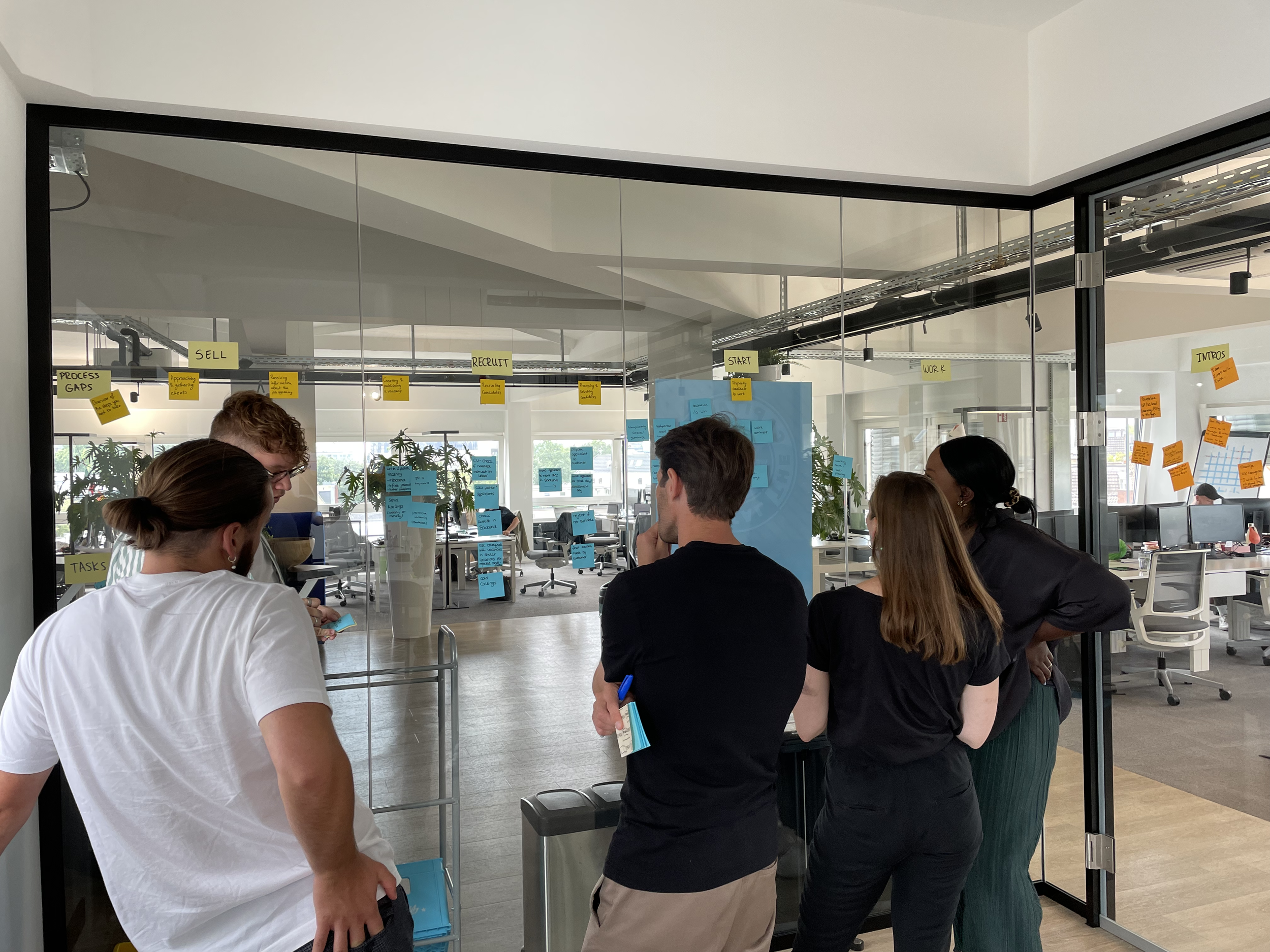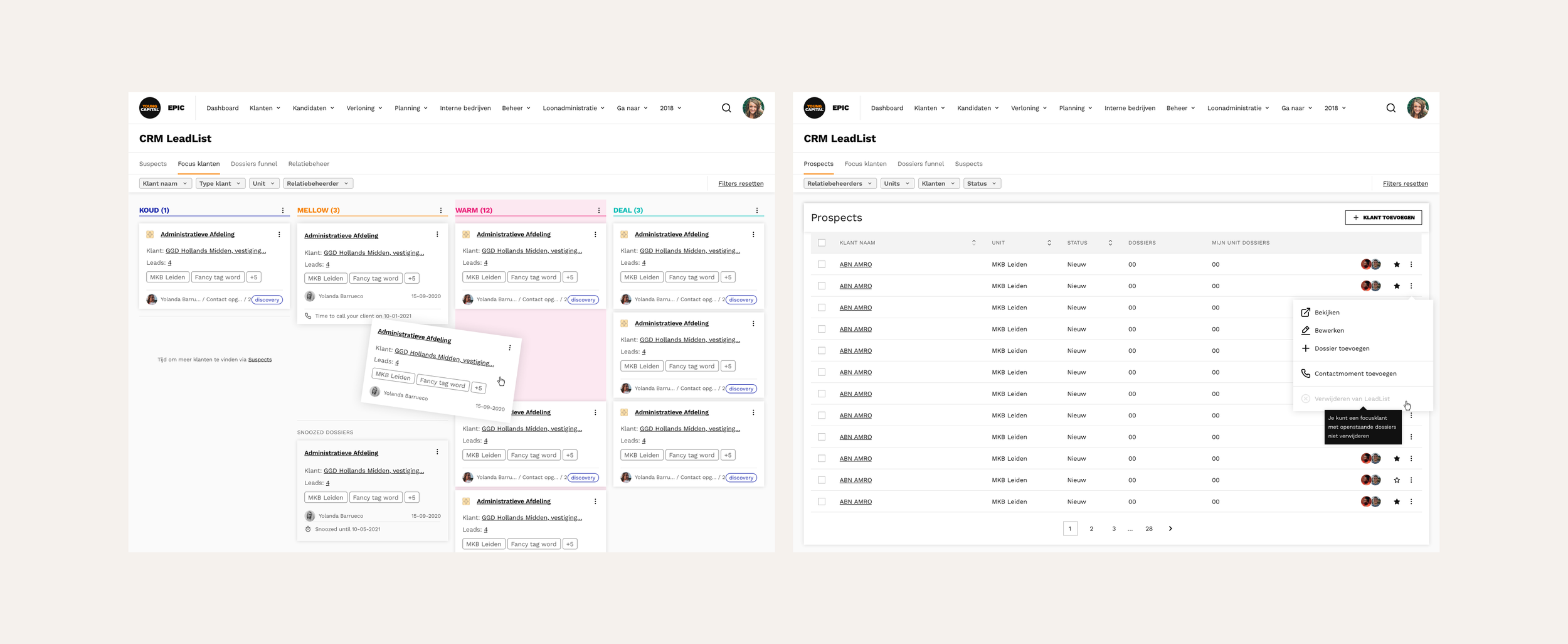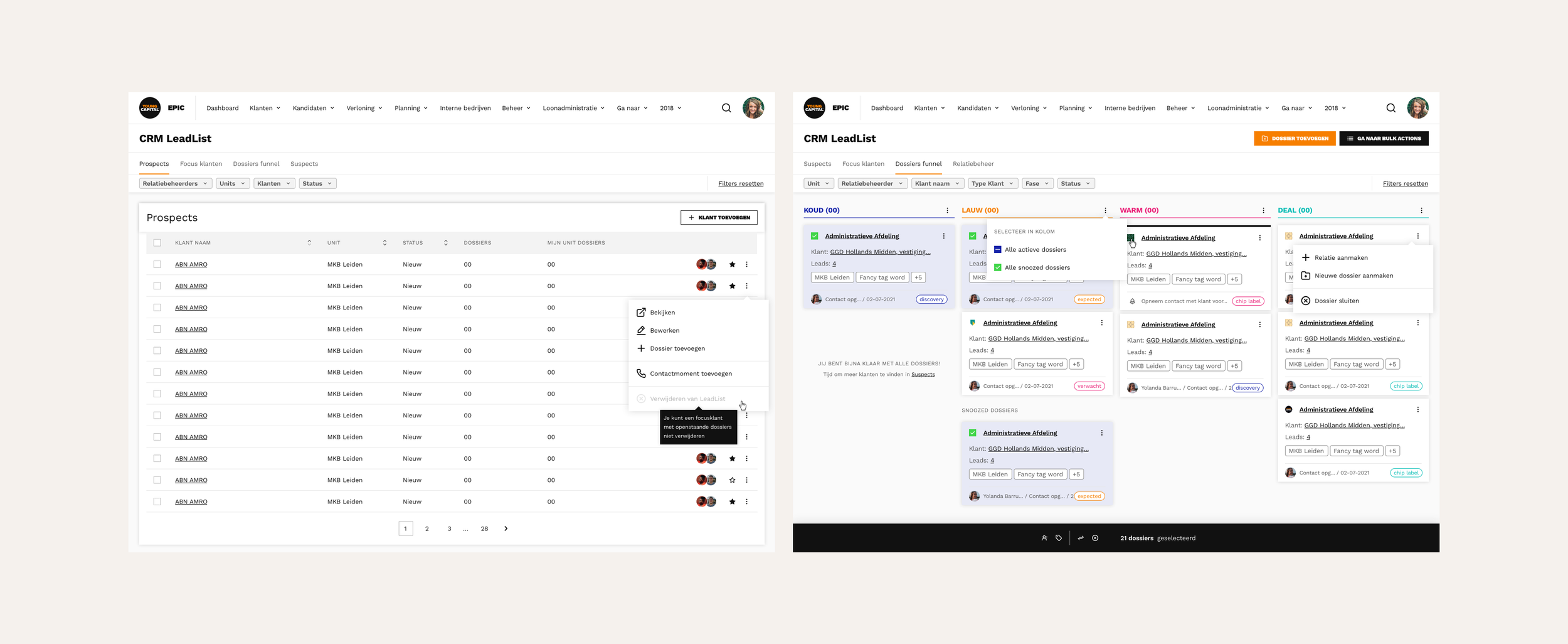YoungCapital CRM System
Introduction
The YoungCapital CRM System project, aimed to overhaul the existing CRM system used by the sales teams, and eliminating shadow administration to improve sales KPIs and Tableau metrics.
Timeline:
2020 - 2022
Role & Team:
Role: Senior Product Designer.
Team: Product Manager, Quality Assurance tester, Front-end and Back-end Developers
Key Responsibilities:
Designed and iterated on CRM system using Origin Design System.
Conducted user research and testing, leading to validated iterations.
Created wireframes, UI designs, and testable prototypes.
Problem Statement
The old CRM system was custom-built but failed to meet the needs of the sales teams. It functioned merely as a list of leads without integration with other internal software. This inefficiency led sales teams to create their own Excel sheets to track leads, resulting in shadow administration, data tracking issues, and reporting inaccuracies in Tableau. Our challenge was to develop a CRM system that the sales teams would find effective and integrate seamlessly with existing internal systems to avoid mistakes and streamline processes.

Research & Discovery
To understand the needs and processes of the sales teams, we conducted several workshops. We analysed their Excel sheets and workflows to identify patterns and streamline their processes into a single solution. This detailed understanding was crucial for designing a CRM system that met their needs and eliminated the inefficiencies of the old system.
Strategy & Planning
Our primary objective was to create a custom CRM system tailored to the YoungCapital’s requirements. The goal was to service all the needs of the sales teams, avoid mistakes, and streamline processes for accurate KPI tracking. By focusing on these goals, we aimed to enhance the effectiveness and efficiency of the sales teams.

Design Process
Leveraging the partially created Origin Design System, I initiated the design process with wireframes, moving on to UI designs and interactive prototypes. We iterated through many versions, testing and learning from each iteration. Through this process, we discovered that a Trello-like approach to interactions and UI would be the most effective.
Implementation
A dedicated stakeholder team was formed to guide the project and ensure alignment with the sales teams' needs. Regular check-in meetings, workshops, and user recruitment for validation were part of our coordination strategy. This approach ensured continuous feedback and iteration, leading to a product that truly met user needs. Because of the lengthy discovery process, and this project being a complete overhaul of the old system, it took us about a year to launch our V1 solution.

Validation & Testing
We conducted multiple iterations, validating each through user testing. User interviews and task completion tracking helped us understand user behavior and preferences. These tests revealed that while the Trello approach worked well, additional lead list views were necessary to accommodate different user preferences.
Outcome & Impact
The new CRM system significantly improved lead tracking and eliminated data entry mistakes by integrating all processes into one system. Sales teams became 40% more effective, with every customer interaction tracked, notes taken for each meeting, and there was accessible information for all leads and touchpoints. This integration streamlined the workflow and improved overall productivity.

Reflection
This project marked the first time we actively included stakeholders in the ideation process, resulting in shorter feedback loops and easier buy-in from sales teams. The success of quick iterations and experimentation with different ideas informed our approach in future projects, emphasizing the importance of stakeholder engagement and iterative design.
